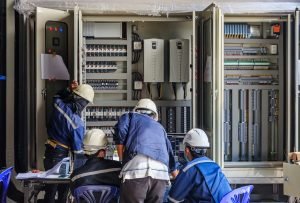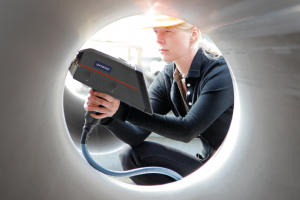In-situ metallography is a reliable evaluation technique that offers real-time material or equipment condition monitoring and health evaluations. As Malaysia’s prominent non-destructive technique services provider, our dedicated team has extensive expertise in the field of metallography.
Backed with years of experience and expertise in in-situ metallography, Xpert Engineering provides comprehensive tests and analyses. Moreover, our expert metallurgists can evaluate any component on-site using a non-destructive approach.
Eager to know more about this topic? Keep on reading!
What is In-Situ Metallography?
The term “in-situ metallography” pertains to evaluating the on-site metallic component’s microstructure. Since the area of interest does not need to be retrieved for analysis in a lab, it is categorised as one of Malaysia’s beneficial non-destructive testing methods.
Read More: Non-Destructive Testing (NDT) Methods & Benefits In Malaysia
Metallography requires meticulous surface preparation. Technicians will remove any paint coatings from the structure via specific polishing methods, and this process is followed by etching before the examination.
Once done, the polished and etched microstructure is transferred to a plastic tape. It is then evaluated using a high-powered microscope with an attached digital camera to develop a detailed analysis.
The Scope of In-Situ Metallography
In-situ metallography evaluates cracks, fire damage, high-temperature service damage, and the ferrite to austenite ratio in duplex stainless steels. Furthermore, it estimates grain size in carbon and stainless steel and examines the component’s overall macrostructure and microstructure.
Additionally, in-situ metallography inspects boilers, heat exchangers, and reactors during annual shutdown maintenance. It also examines the impacts of on-site post-weld heat treatment operations and validates the weld microstructure of huge fracture mechanics (CTOD) specimens before the notching process.
For your convenience, we’ve listed some of the major functions of in-situ metallography:
- To investigate the in-service degradation of essential components of process plants that operate in risky environments (high pressure, high temperature, or corrosive atmosphere).
- To assess the condition of fire-affected equipment.
- To conduct microstructure surveys on key components such as boilers, pipelines, reactors, and vessels for condition monitoring and evaluation.
- To produce accurate data of the equipment’s critical components via periodical monitoring.
- To inspect the quality of the components’ microstructure before using.
Damages Detected by In-Situ Metallography
Metallography is extremely helpful in identifying damages such as:
- Graphitisation
- Creep- particularly in regard to high-temperature and high-pressure equipment such as reactors and boilers
- Thermal degradation- particularly in regard to stainless steel materials in high-temperature equipment
- Failure analysis
- Oxidation
- Grain growth
- Hydrogen embrittlement
- Intergranular corrosion
- Stress corrosion cracking
Unrivalled In-Situ Metallography Service in Malaysia
In order to deliver high-quality services and provide accurate results, Xpert Engineering deploys future-ready metallographic instruments and equipment to cater to your unique needs.
We provide reliable metallography testing services to evaluate and verify the condition of your equipment. Our well-trained team of professionals are ready to perform meticulous tests to ensure your equipment’s quality.





